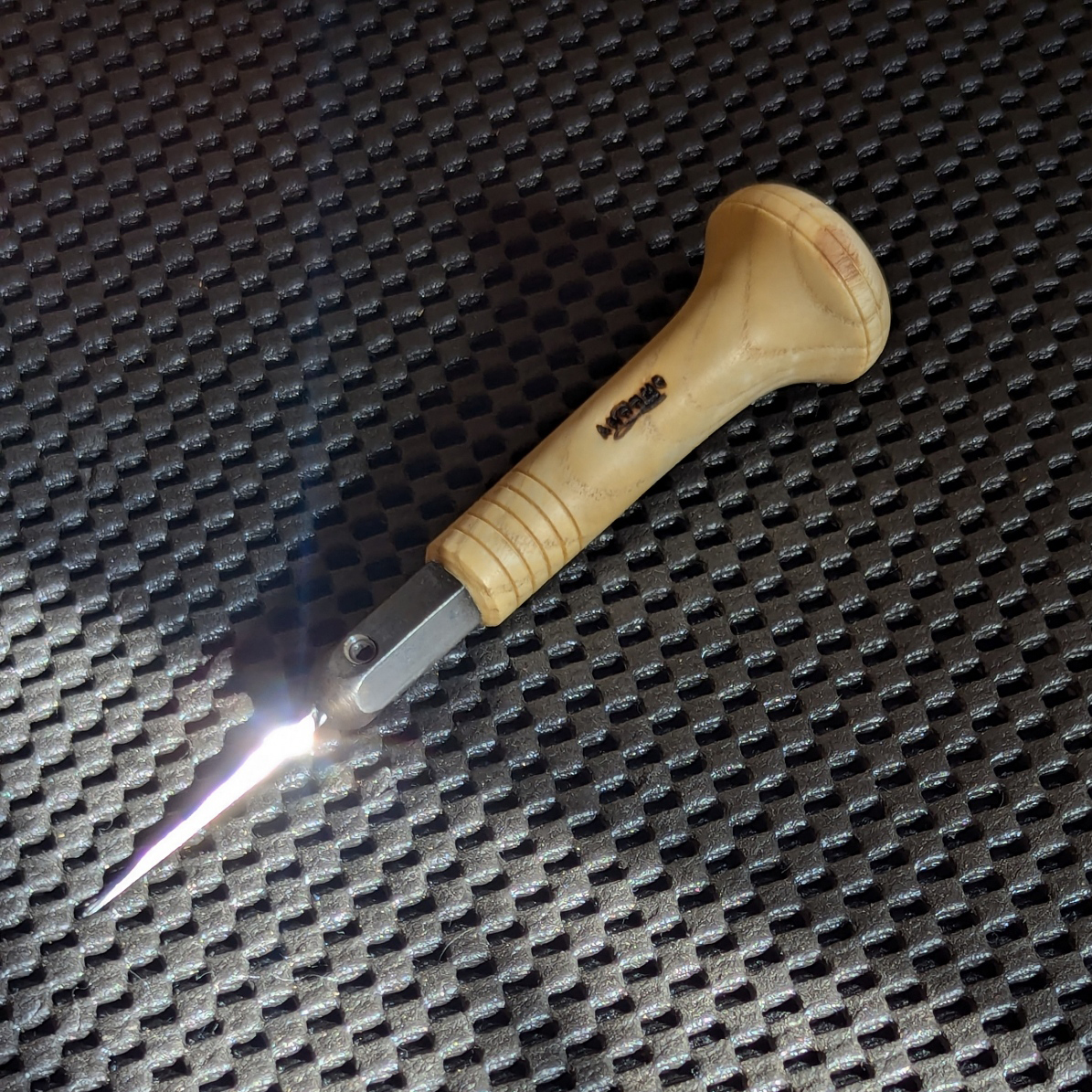
I know that many of you have been doing this for many years. That said, I’m finding that it’s been helpful for me to explain how I came to make the awl hafts that I make and how I use them. I’m sharing this with everyone who buys these hafts and blades.
These new blades are so sharp that they will immediately start a new hole if you need to change direction. So just back out a bit, get your new aim, THEN push straight with no torque on the blade. You’ll feel it take off in the new direction. These awl blades won’t bend or break if you get in the habit of running them this way. The palm knob is large and matches your palm. So, push straight through your arm bones (radius and ulna) to your palm to the haft. That’s the best way to avoid torque. I haven’t had one fail in many years (knock on wood…)
Temper to Bend VS Temper to Break
My personal preference is to have a blade bend rather than break, that way I can straighten them by tapping them on my benchtop with a rawhide or soft blow mallet. However, I have recently decided to temper my blades a little harder to make them more like the blades that my customers are used too. I’m using Super 7 steel, the most shock resistant tool steel available. If used as I’ve described above, they will perform very well for many bindings without failure. The key is the sharp edge, which is polished with an exceptionally fine abrasive wheel rather than a buffing wheel to maintain its keen edge from the tip to around the first third of its length. If you take one of these blades to your buffer you will destroy this edge stopping its ability to cut its way through leather. It then becomes just a very pointy needle which will require you to use the torque that becomes necessary to steer it. That’s why awl blades break. The edge that it comes to you with will last a long time. I strop my blades and will be posting a video on how I do this so that I can find the bevel, and not round over the edge.
Push through the Palm Knob
The inspiration for my hafts came from an awl haft, (handle), that was dug up during an archeological excavation in Historic Jamestown ca. 1607–1624. https://historicjamestowne.org/archaeology/ .
The haft was quite short and had a flatter shaped palm knob. It’s worth noting that there was no such thing as a stitching machine at the time the haft was made and used.
I first read about this haft on a boot and shoe making forum in the 1990’s which was run by ‘The Honorable Cordwainers Society’. Al Saguto worked at Colonial Williamsburg at the time and he introduced us to the discovery of this haft. He gave us the specific dimensions of it and several of us started making them. Hafts like it are now quite common among boot and shoemakers / cordwainers.
The key to its use comes from its length, and the flatness of the knob with its larger circumference. The knob matches the palm of the user’s hand when pushing it from the forearm bones through the palm to the haft and the blade in a straight line which will cancel out any side-to-side torque. The haft is also short enough to allow the user to reach the blade and to push against the piece that is being stitched with the thumb to push the awl out of the leather rather than pull it out by wiggling the awl and pulling with the whole arm.
I look forward to sharing more about my awl hafts and blades in future posts which will include images and videos.
To order awls and blades please call me direct at 307-272-8585. They will be available through the online store here at a future date. I will send you an invoice that can be paid online without my having to collect your credit card information. I also accept Venmo and personal checks.
Cheers, Gordon-
